Terrill Welch by herself - issue #15 Sea and Seals and Evening with Tree of Life Paintings
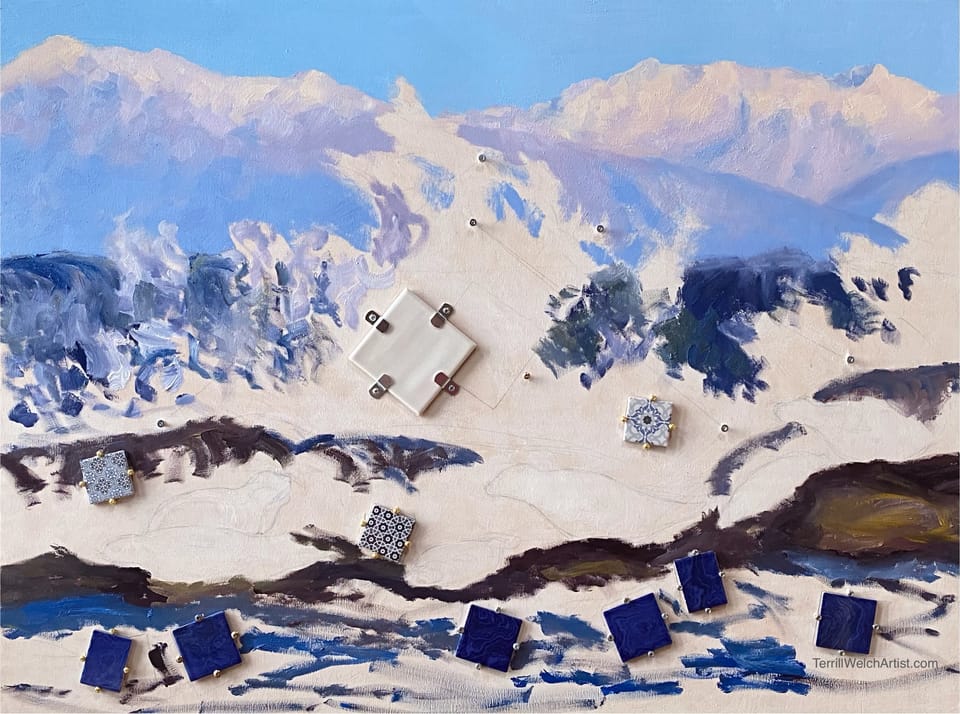
From the middle of January forward, I have been deep into the paint and brushes of learning and studying. This means that not much besides basic survival has happened beyond my painting practice. I have kept us fed, the bills paid and various commitments fulfilled but that is about it. The rest of the time my whole being has been filled with the development and process of painting. Unfortunately or fortunately, depending on how we look at it, this is what I have to share with you this month and so I will do it in some detail. I suggest settling in and coming along for these two unique painting journeys…
SEA AND SEALS - MATERIAL LOW RELIEF PAINTING
Every once in a long while something comes crashing into my painting practice and creates a disruption. Such is the approach to this latest painting. Due to its significance and possibly lasting impact, let’s take one of our long explorations of the process.
It all started with studying the work of Canadian painter Paterson Ewen who used a router saw to make marks in big sheets of plywood as part of his painting language. You see, Canadian Art and artists and the landscape did not end with the approaches to painting of Tom Thomson, the Group of Seven and Emily Carr. Canadian artists’ approaches to the landscape evolved and changed as it did elsewhere in the Art World. This next work I am sharing takes us squarely into the 1970’s and came to my attention due to my studies in The Canadian Landscape part II course with the Vancouver Island School of Art.
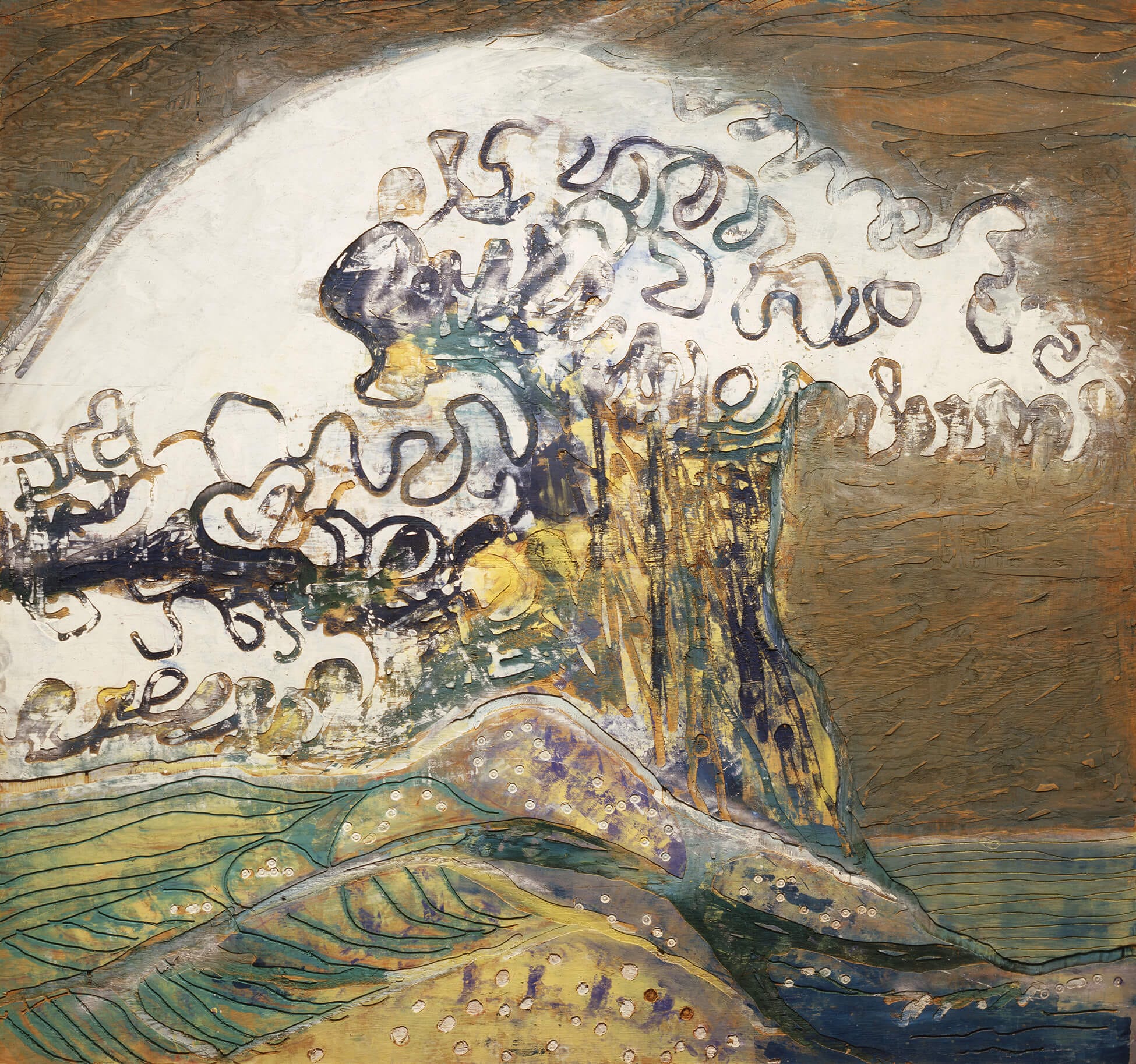
Notes from Art Canada Institute: Paterson Ewen (1925–2002) had the rare privilege of being involved with two seminal moments in Canadian art: the first with the Automatistes in Quebec, the second with the London, Ontario, art scene of the 1960s and early 1970s. The former directed Ewen away from landscape painting, the latter back to it. But Ewen’s treatment of landscape painting was far from traditional; it involved using large sheets of plywood that incorporated printmaking and sculpture.
“Paterson Ewen was unmistakably original. His work bridged figurative and abstract, fused painting and sculpture to create a whole new medium, and broadened the definition of Canadian landscape, revitalizing national interest in this art.” ~ John G. Hatch
For my assignment, I knew there was no way I was using a noisy router saw for anything, even if I liked the result. I can barely manage the sound of a hair dryer, vacuum, electric mixer, air conditioner or a ceiling fan. So for my class project, I decided if I wasn’t going to create a work by digging into my surface could I instead do something meaningful by attaching something onto it in a painterly manner? This is when my new idea developed and it just might have enough momentum to carry on into a whole new vein of painterly expression. I am cautiously optimistic that I might possibly be on to something exciting! Let’s have a look, shall we?
I started with a piece of the Sea and Seals photograph from a few weeks ago and, by changing things slightly, I was able to create the composition I wanted - even though the scale of the tiles are too small in my workup. It is enough though to know where I want to take the work.
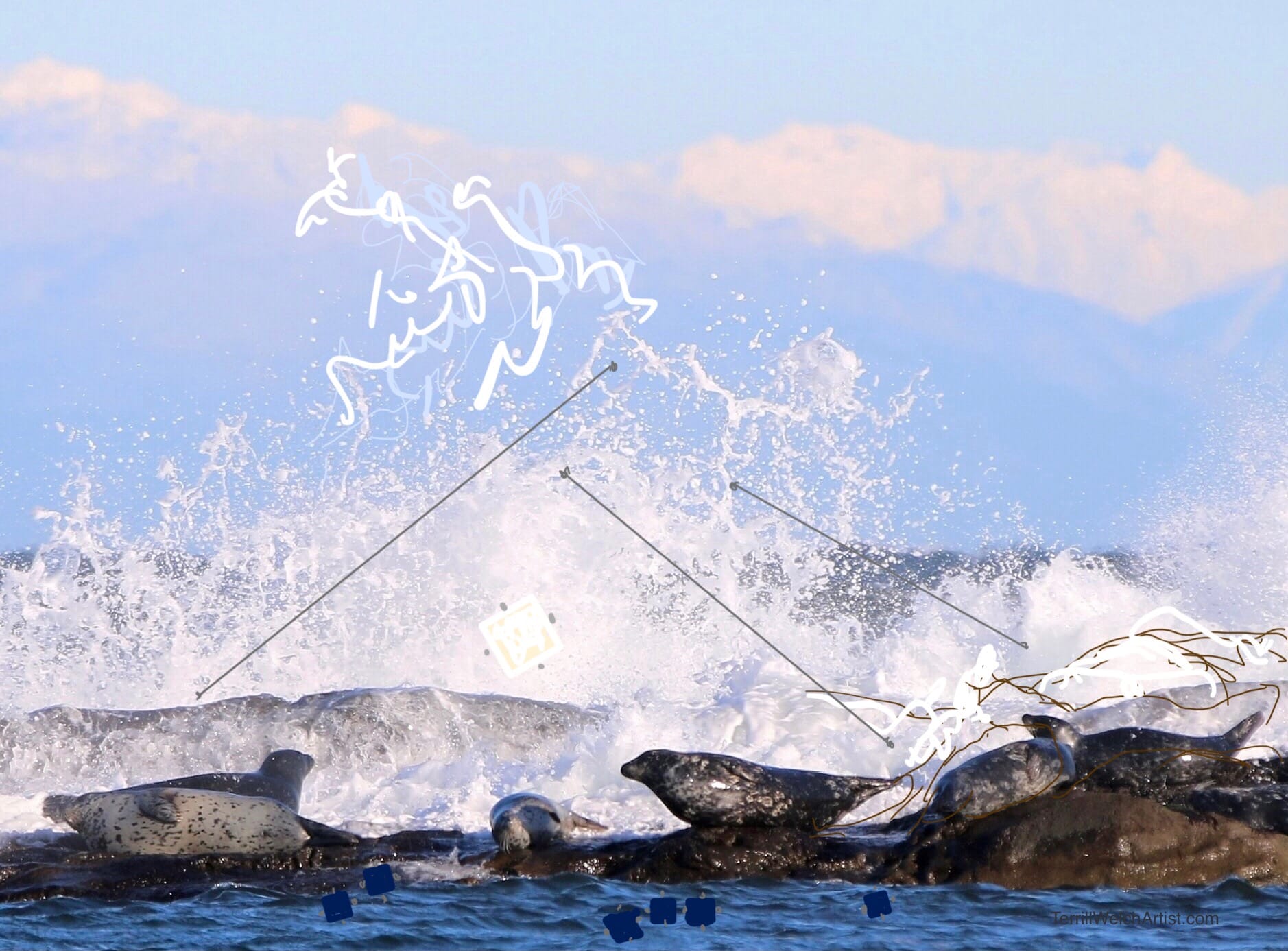
Once I had this sorted in my mind, I was ready for my next grand leap involving ceramic tiles, screws and wire on wood.

I had already applied a gesso seal to the wood and for drying purposes I didn’t want oil paint under the tiles. In addition, I considered the tile and screws to be like the first layer of paint even though in the finished work they would be of a higher relief. I could have glued or plastered the tiles to the wood but the physicalness of the screws are important texture and visual disruptions to the oil painted areas. Once everything was secured, up on the easel it went!
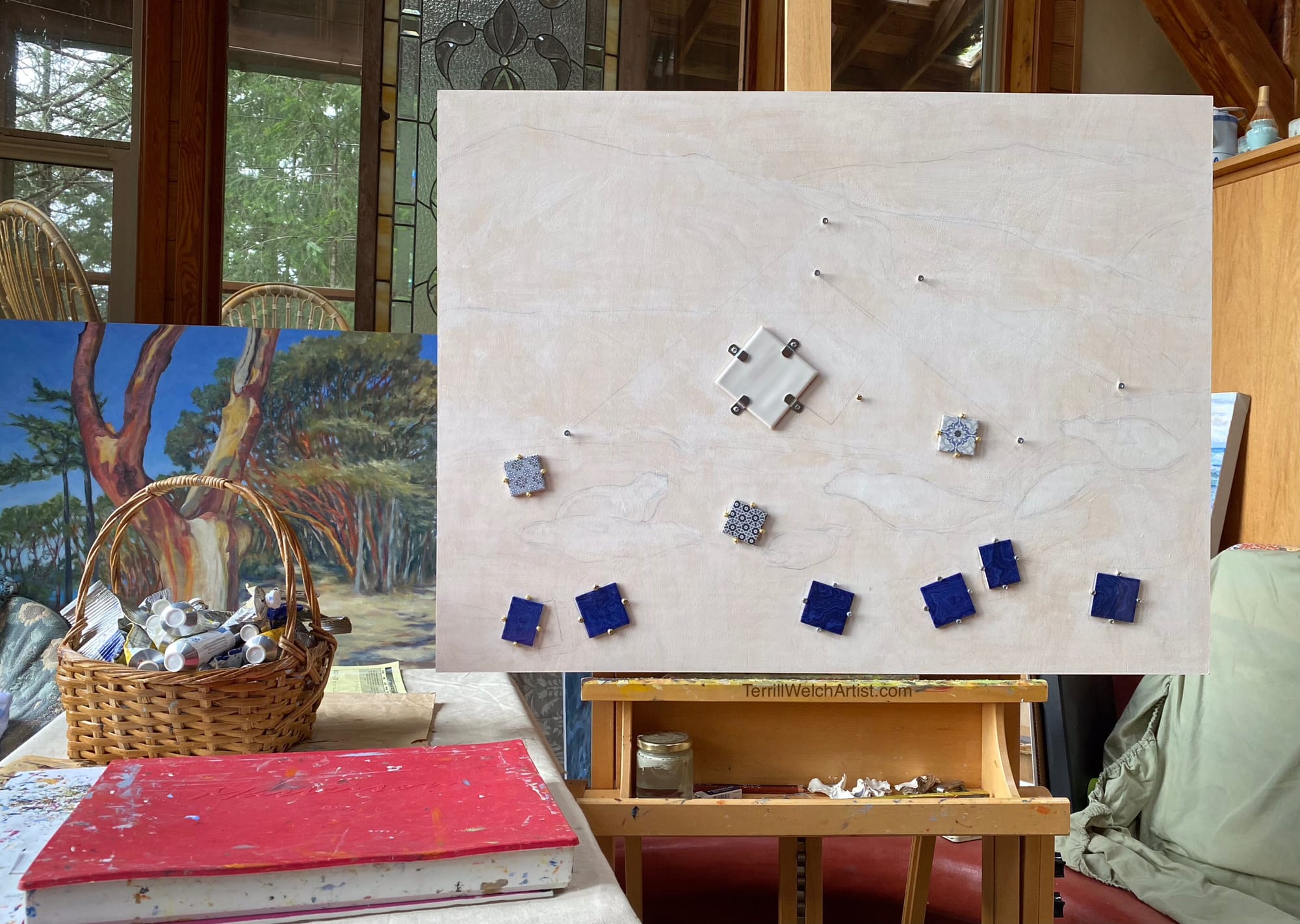
I basically started with the areas I was most sure of and worked my way to the more uncertain areas.

Eventually, I had my painting notes all over the canvas.
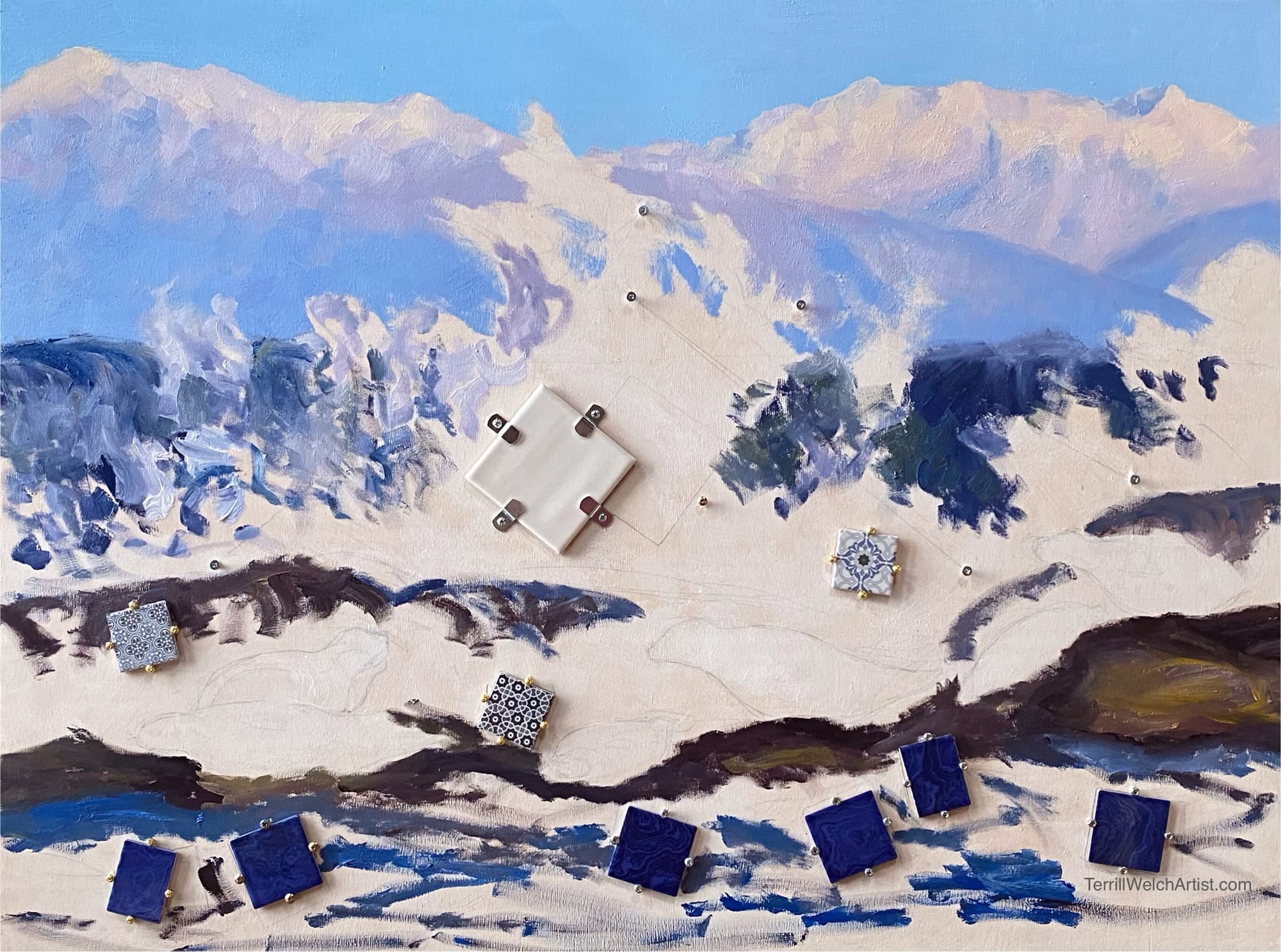
I could see and feel where I was going! From here it got easier. The painting process took another couple of sessions to complete. Then I had to wait for it to dry to the touch before I could add the wire and more random screws but I was pretty sure my idea was going to work. Here is the finished painting.
“Sea and Seals” by Terrill Welch, 30 x 40 inch oil, ceramic tiles, screws and wire on wood.
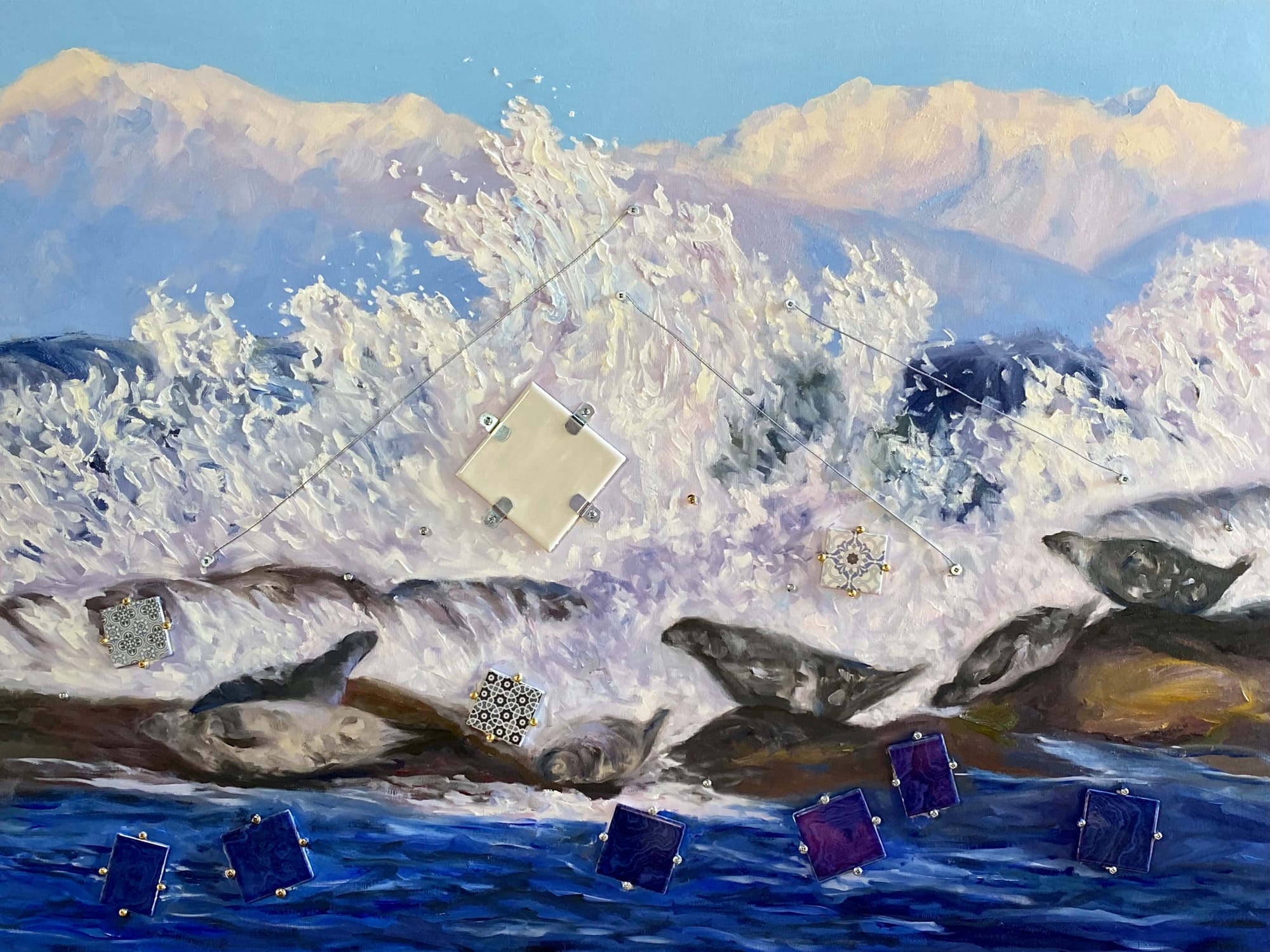
Artist notes: It was so cold that ice was about two inches thick on the sandstone and the sea spray was freezing like mist as it was blown across rolling waves. Yet, the seals rested in their usual place. This painting is part of the a new “Screwed Up” series that is developed using parts of only one of my reference images for inspiration. The paint brush marks are the impressions of nature and the screws, wire and tiles are the intervention by our human species. This work will always interact in noticeable ways with its immediate physical environment through the light, reflections and shadows of the materials. In this way, the painting remains a work-in-progress forever.
Here is a detail of my personal favourite seal being washed by sea water…
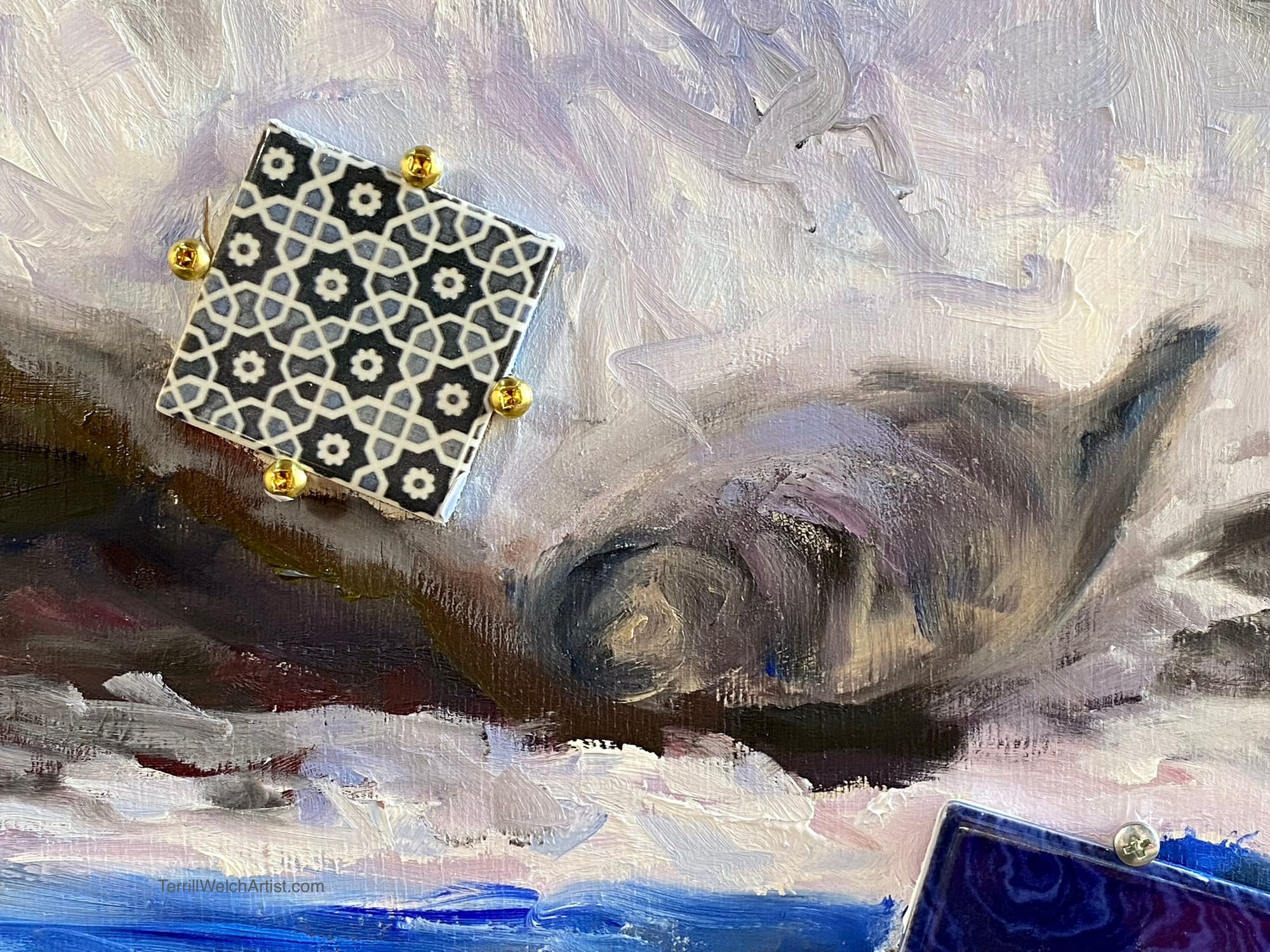
And how about a digital room view?
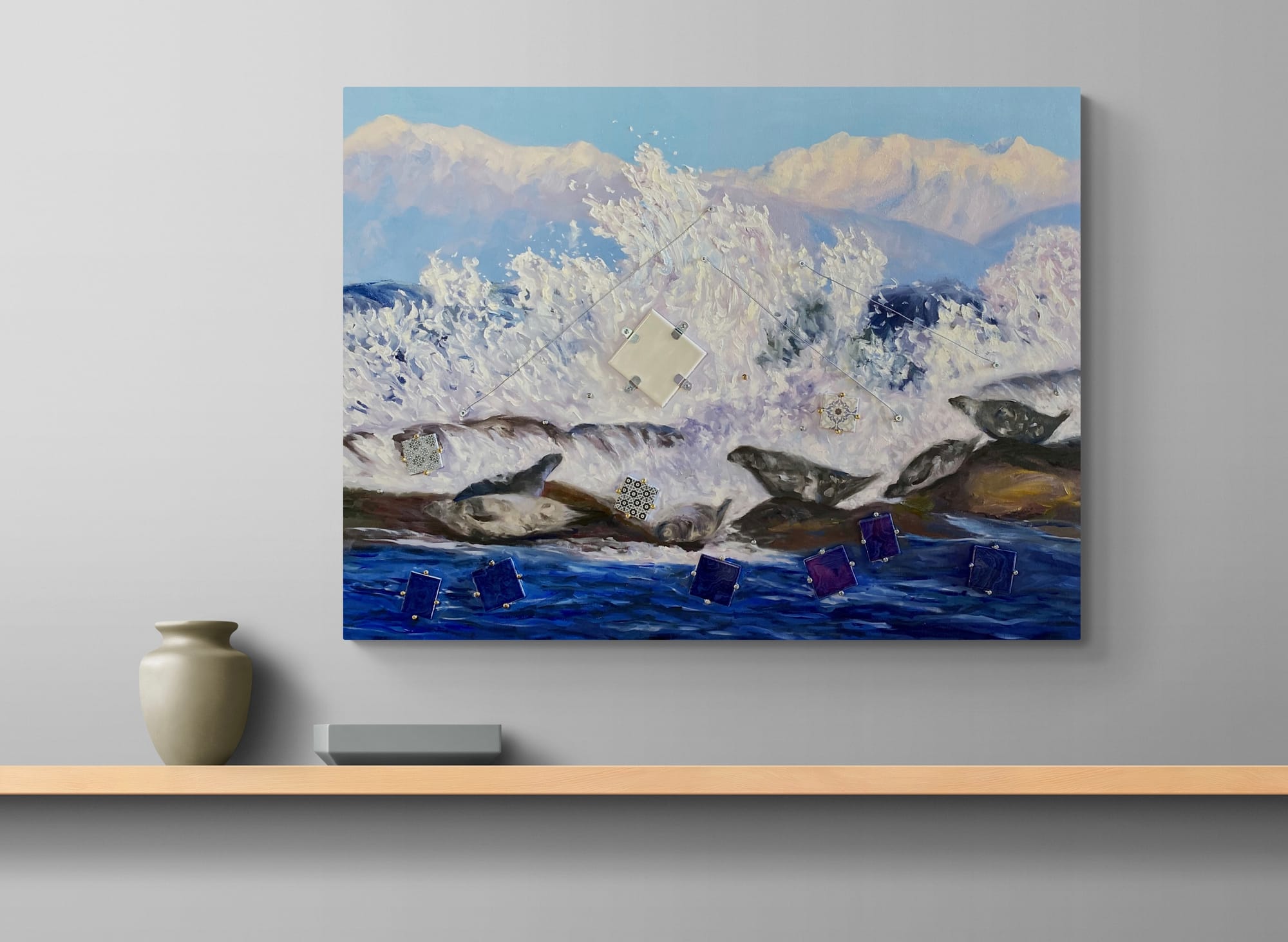
Well there you have it! I am seriously considering doing more of these material low relief paintings. The strength and physicality of the work appeals to me. What do you think? Is it worth a go?
In addition to this work, I also completed another 24 x 30 inch painting of one of Mayne Island’s iconic arbutus tree.
EVENING WITH TREE OF LIFE PAINTING
This next painting was developed from a digital painting sketch that I manipulated using a photographic reference and a colour palette similar to a beautiful Paul Klee painting that I love from 1915.
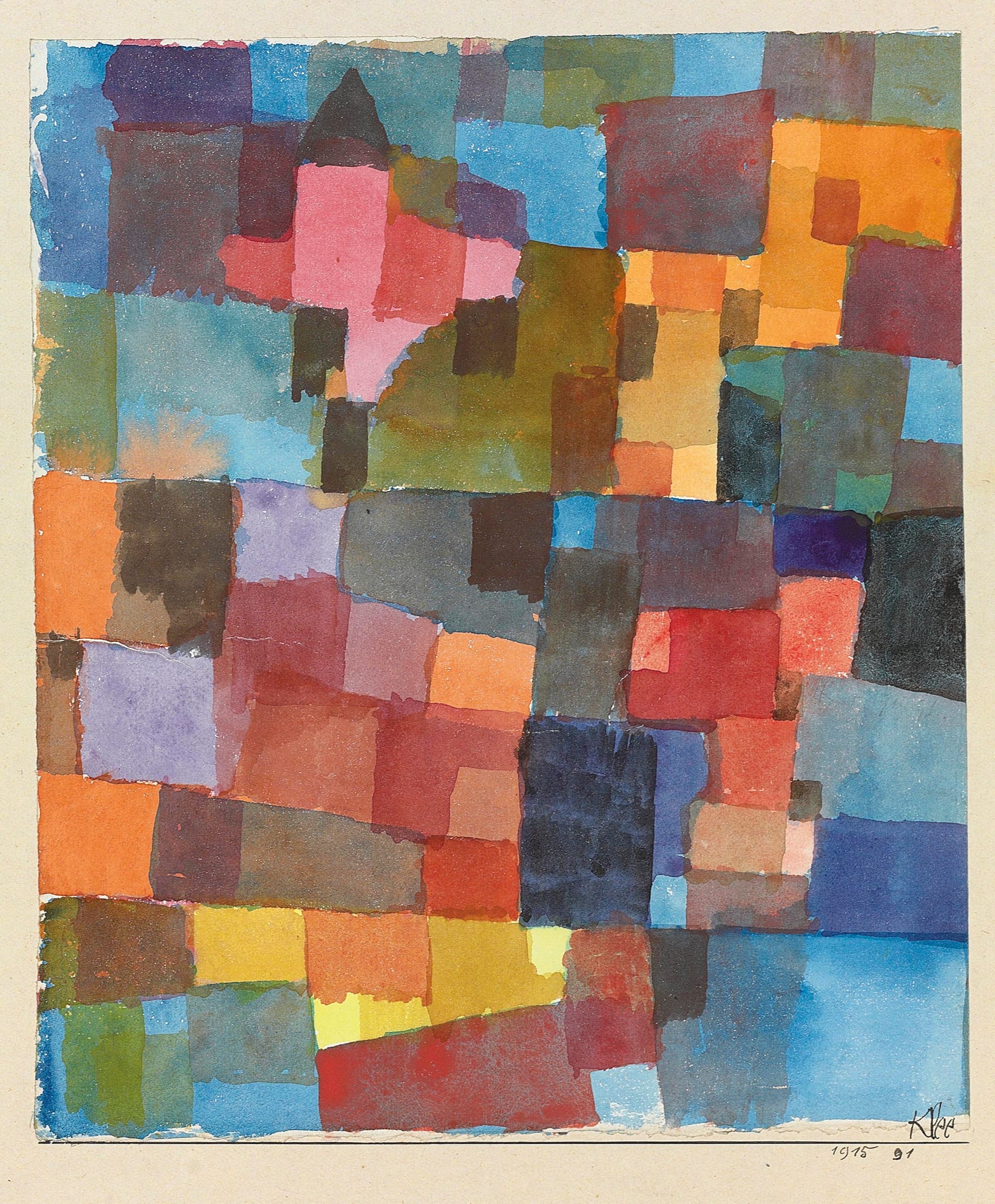
The program app I sometimes use to manipulate my photographs is BeCasso but it takes several layers and the use of my new Apple Pencil to get to this digital painting sketch I used as a starting point for this painting. Let’s just say it is not straight out of the box! I was eventually able to get from here…
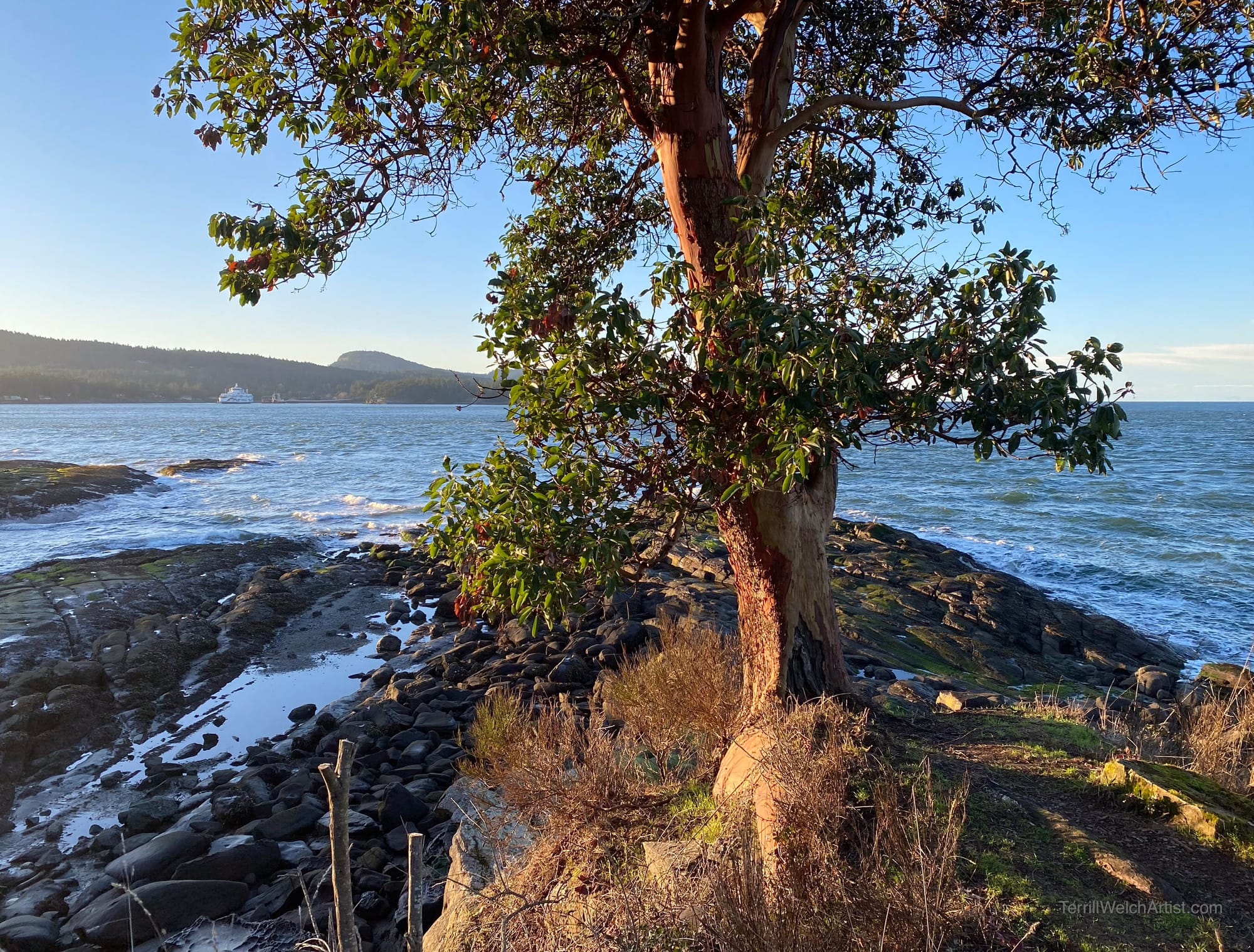
to here and had a digital reference painting sketch to help guide what I wanted to do…
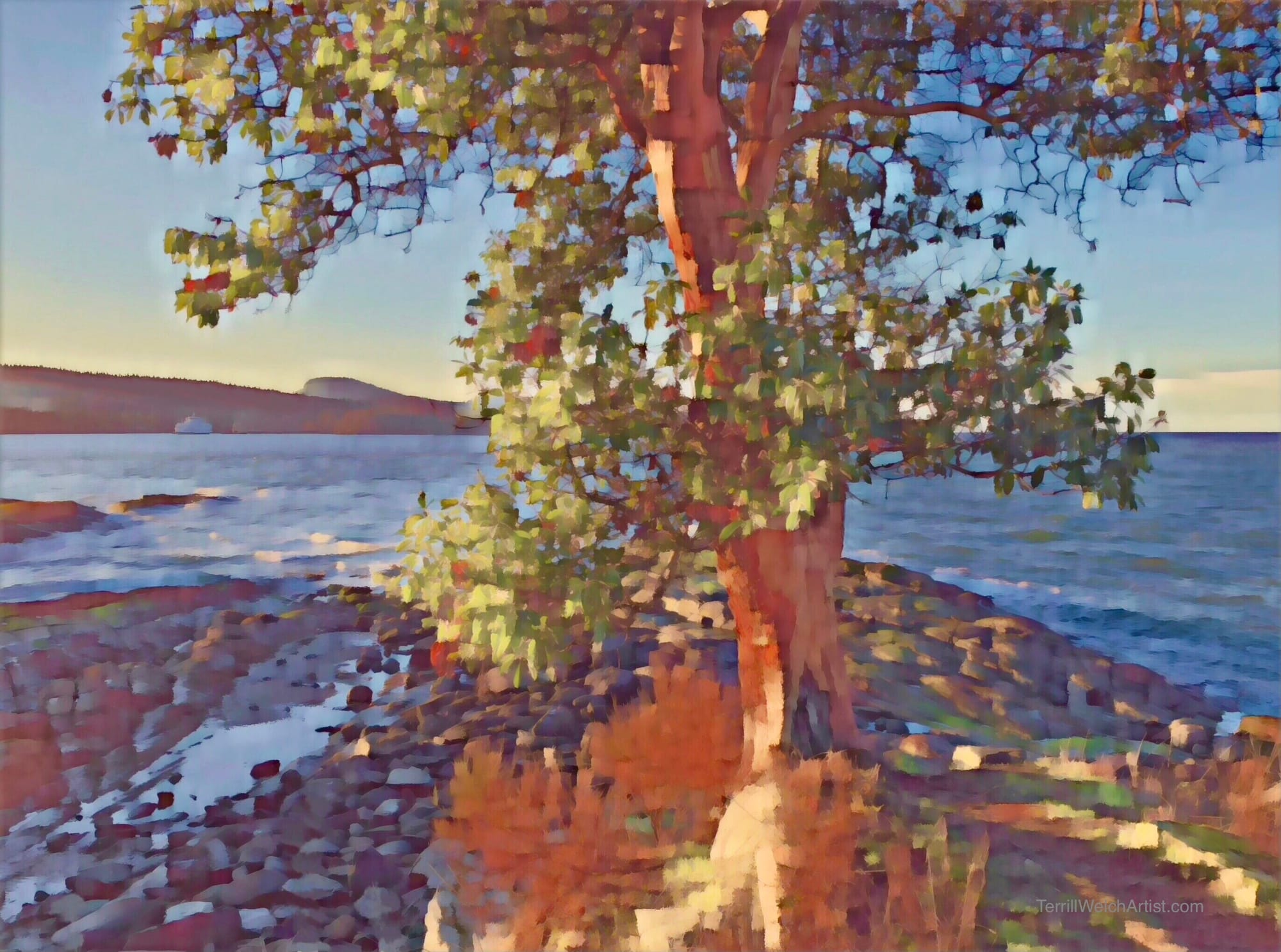
It is not quite right yet but is close enough for me to take the work the rest of the way on the larger canvas with my brushes. I am also going to use a composition technique that I am borrowing from Cézanne which is most noticeable in this still life painting below. I won’t tell you what the technique is right now but see if you can figure it out when you look at my final painting and refer back to this image.
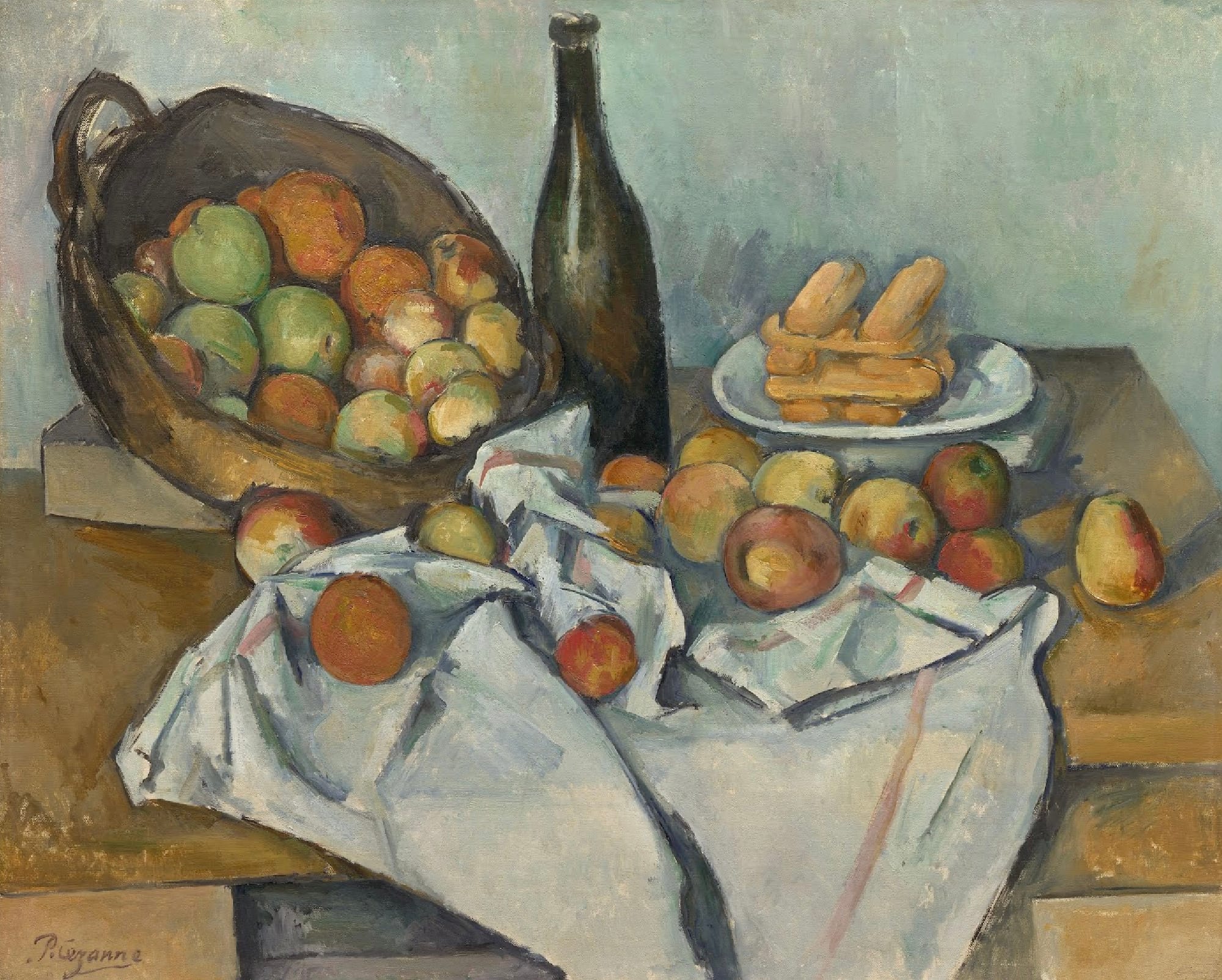
Here is my final painting “Evening with the Tree of Life”…
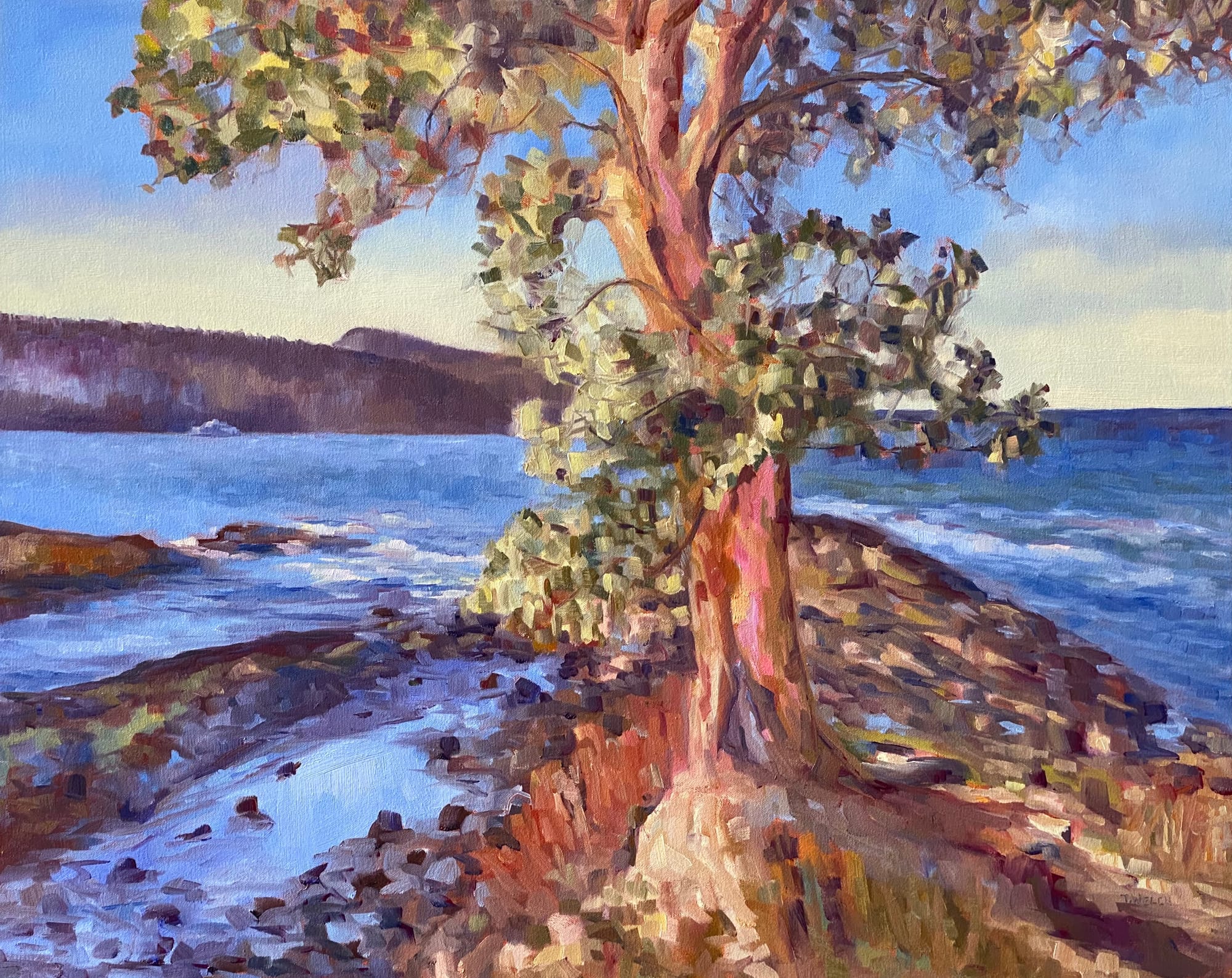
Artist notes: many places have certain tree that is like a community or neighbourhood wellness checkin. For me, this is the arbutus tree in the Georgina Point Lighthouse Park that stands alone at the entrance of Active Pass next to the Strait of Georgia. I have painted this tree several times but this is the first time from this vantage point in evening light. This painting is a conversation between this special tree and me and now you. It has special secrets and attributes that only through conversation can they be easily shared.
My inspiration for using several sources and tools to create this painting comes from the work of Peter Doig who is an important contemporary international painter that Canada often claims as its own because he grew up here, along with Scotland where he was born and Trinidad where he lived and worked for years and England where he is now. His solo show at the Musée d’Orsay just closed in January. From Peter Doig’s interviews, he seems warm and kind and extremely humble for all the success he has had. I would like to share with you one of his paintings from when he first went back to Trinidad as an adult…
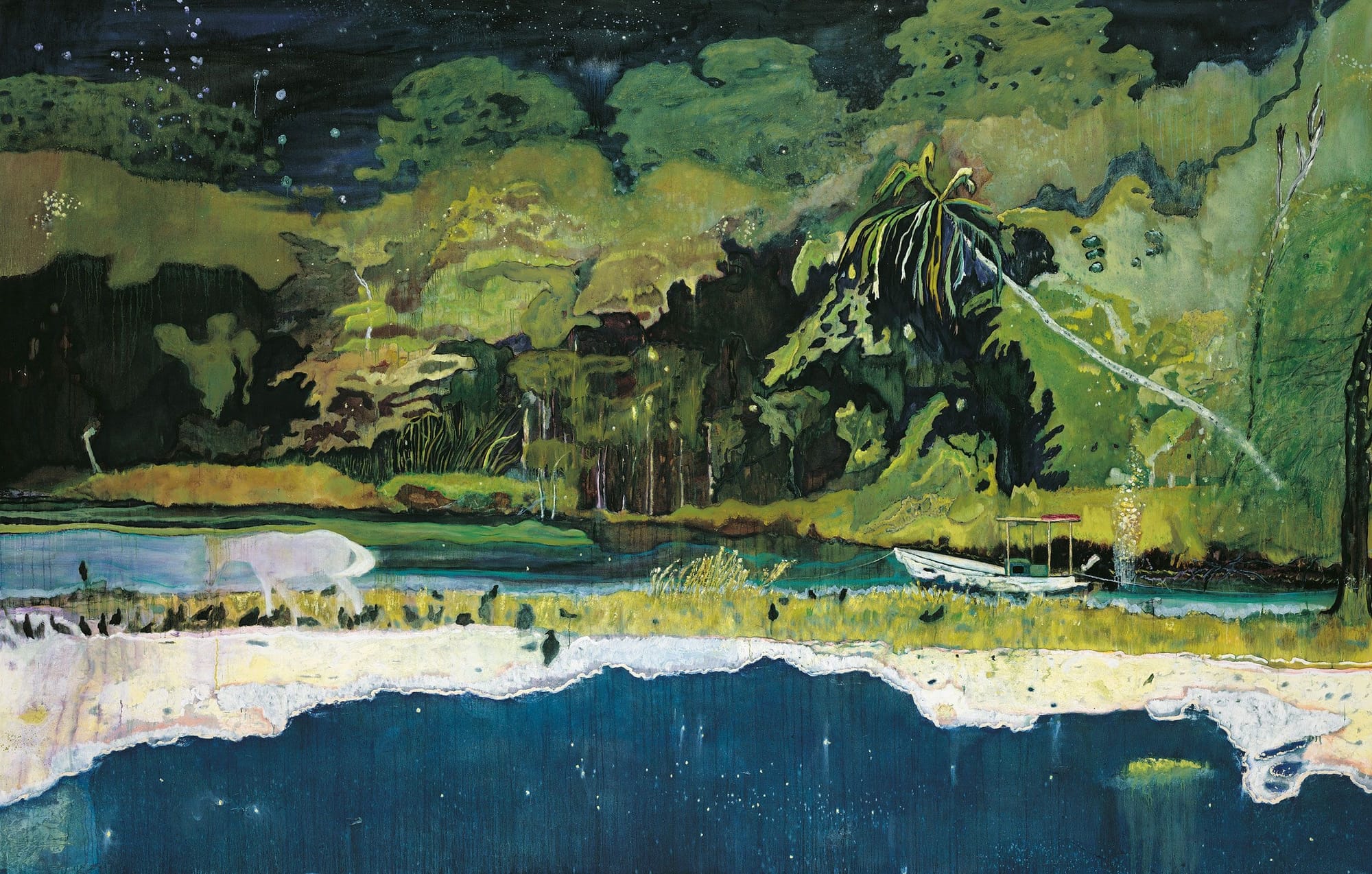
Doig uses all of his knowledge from the old masters to help us understand how memories work and in the process knits and weaves together many sources just as if we could see what our mind is mumbling on about and connecting in interesting ways as we think and daydream. I like that he leave passages in this painting rather vague because we know the reptilian part of our brain has captured the shapes of light and shadows but we either do not have to or we do not remember any more than this. It is enough to place the rest of his thoughts, ideas and musings into a context and this is all that is needed.
If you are not yet familiar with his work, I encourage you to look it up and then watch some of the latest interviews on YouTube about both the recent show in England and the one in Paris, France.
With this background and my digital painting reference sketch, I am ready to start painting and it was pretty straightforward from there.
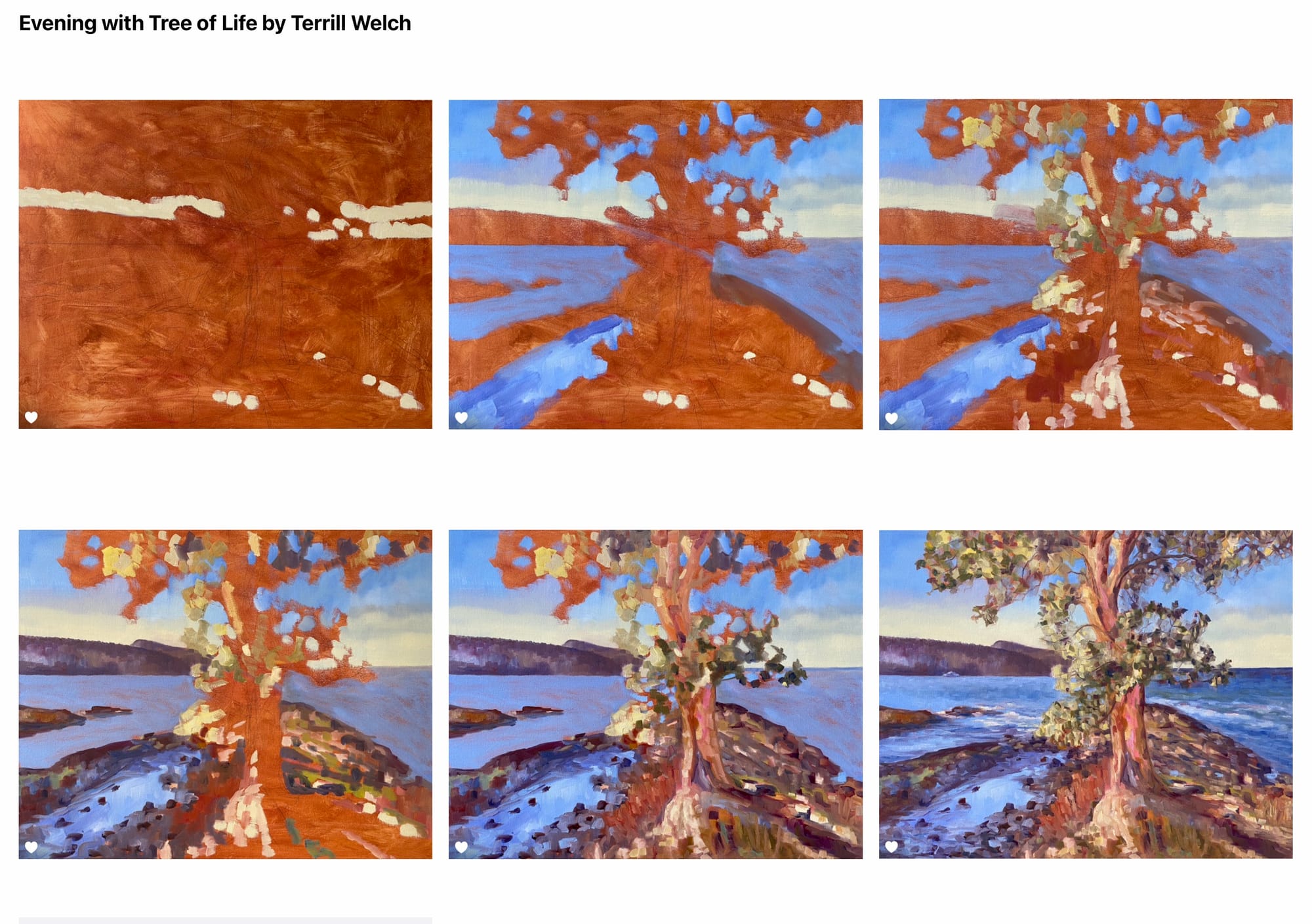
Now, before we leave it, have you figured out yet what the secret Cézanne composition is in this painting? Shall I share? Okay, here you go? If you look at both this painting and the Cézanne and run your eye from right to left, the right side. the table is deliberately raised higher than the left with the tablecloth in Cézanne’s painting and the horizon line and sandstone with the tree in my painting covering up this disruption in the composition. Why do this you might rightly ask? I did it because I wanted the feeling of looking at the painting with both eyes open and constructing the view as we are looking. It is a way of activating the surface in a purposeful way. And now you know another if this painting‘s secrets that will likely be hard not to see now that you know.
WHAT I AM READING
I had the opportunity to take some time with the work of Annie Pootoogook (1969-2016). I then read about her life and work in an article by Nancy G. Campbell on the Art Canada Institute at:
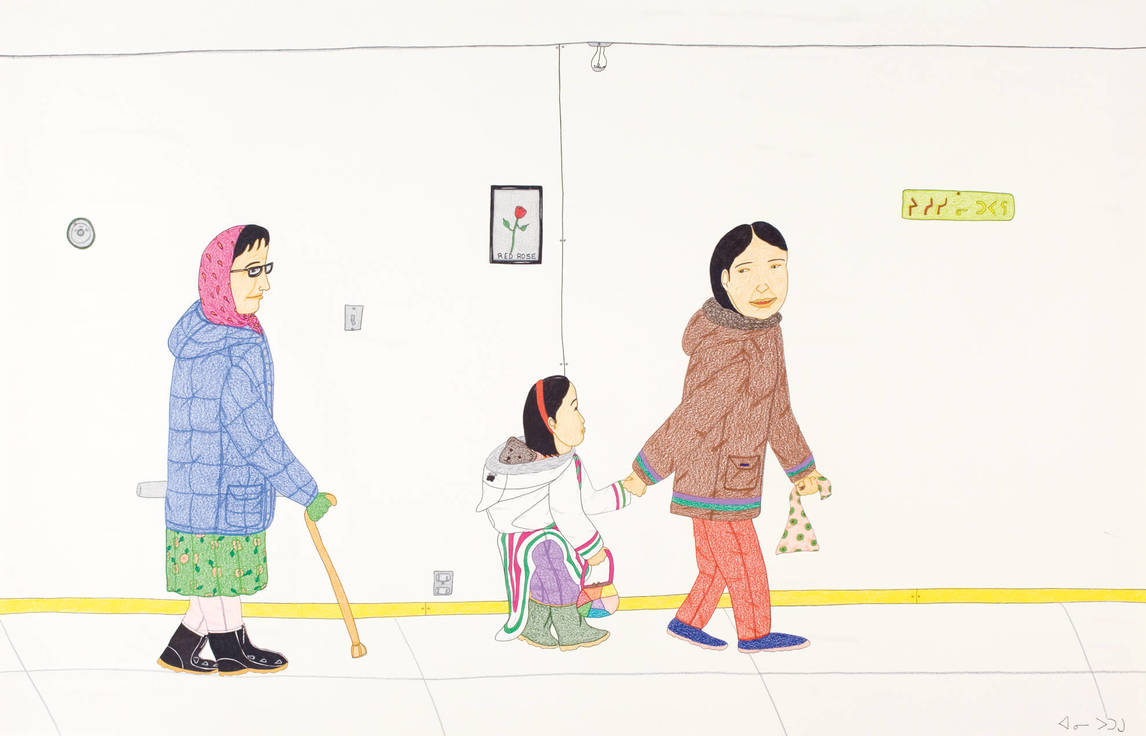
This is not an emotionally easy read, to say the least, but an important juncture for documenting Contemporary Canadian Art and our complex relationship with colonialism, both in the work itself and also Annie Pootoogook’s experiences as an artist navigating the pitfalls of the art world.
NEW RELEASES
These latest two paintings will become available to the public after next Friday. The new “Sea and Seals” painting possibly will not be available for purchase right away. Or if purchased, it will need to be available to show as part of the series later in the year. I haven’t quite decided yet as it will likely be late April before I can start on more “Screwed Up“ paintings.
I have now released the abstract painting shared in the January issue and you can view it here:

NEW SHOW - WEST COAST TREES AND TRAILS

This show looks great in the gallery pod and you can see all the works in the private viewing room in the link below:

UNTIL NEXT TIME!
I hope you enjoyed your deep dive into the life of a working artist this month. I must admit that I go to bed at night humming with ideas and painting puzzles to solve and leap out of bed in the morning ready to dig in and get to work. There is an internal almost fevered pace to a full blown creative episode that drives and directs my sensory system. Thankfully, my responsibilities as primary caregiver for David and just his kind nature and company provide a counterbalance. However, by the time April comes around, I should have a nice solid start on this year’s work and be ready for the busier gallery pod season.
Thank you so much for continuing to keep me company in this more private space where there is room for sharing experimental new process and the network of ideas and study behind paintings.
Also, a few more paid subscribers for “Terrill Welch by herself” would be most welcomed. If you are enjoying these monthly issues and the free “Just Art Calendar” on the first of each month along with the quarterly publication of “A Brush with Life” feel free to forward the email version of this issue to others who you think might be interested. No pressure. Just if you happen to think of someone. They won’t be able to view the issue online but will be able to read it in your forwarded email which will give them some idea what the publication and my work is all about.
Warm regards as always,
Terrill 👩🎨❤️🎨
P.s. Feel free as always, to write to me privately, if you wish at: tawelch@shaw.ca

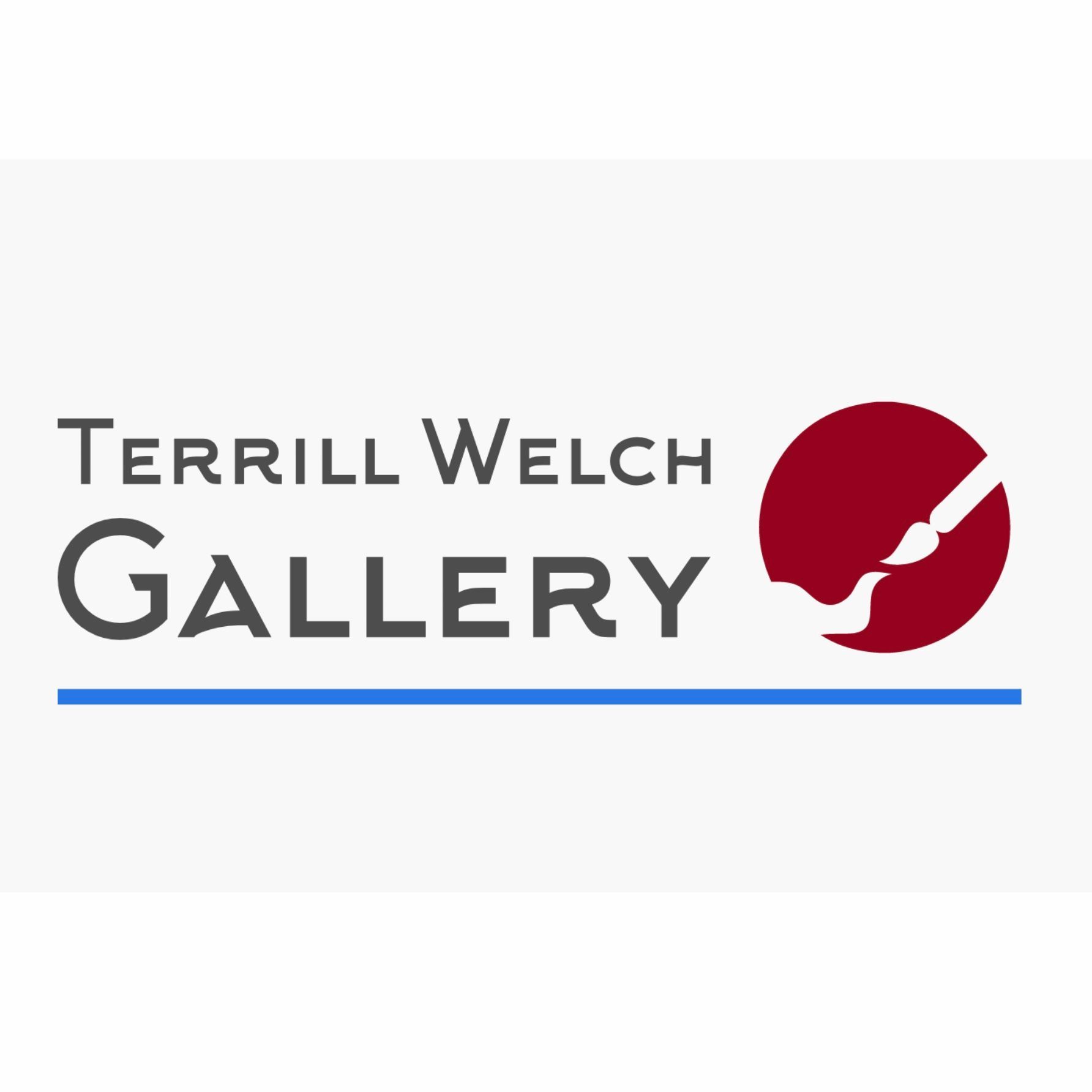

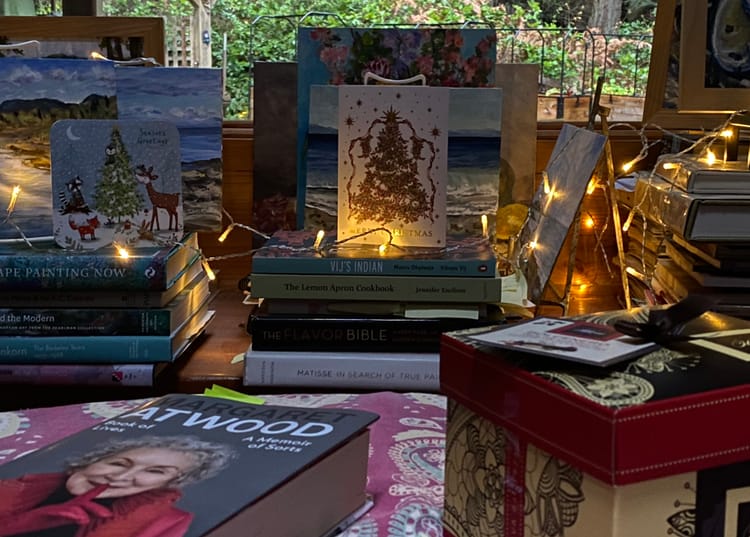
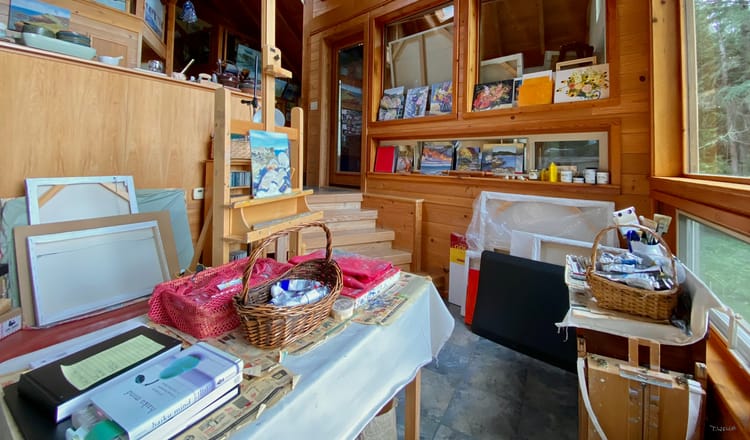
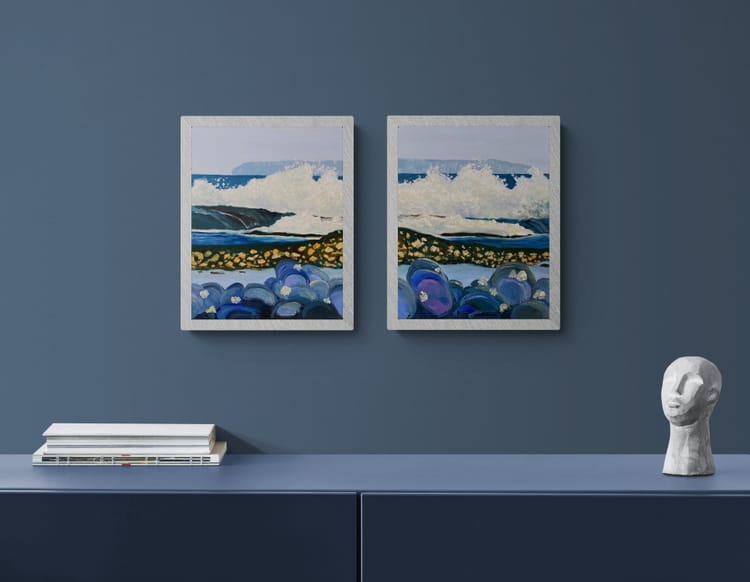
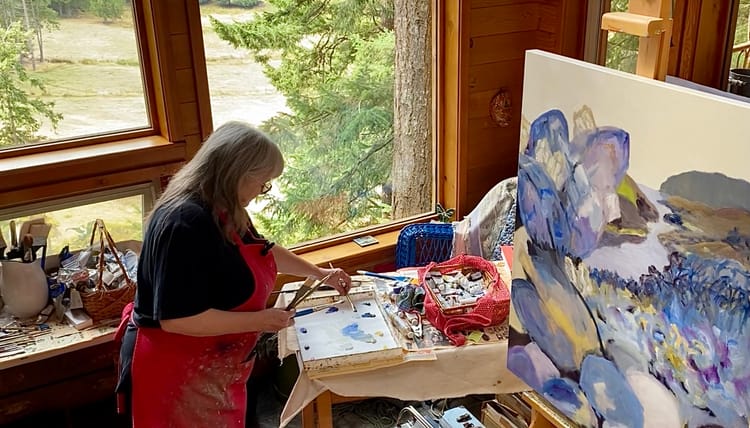
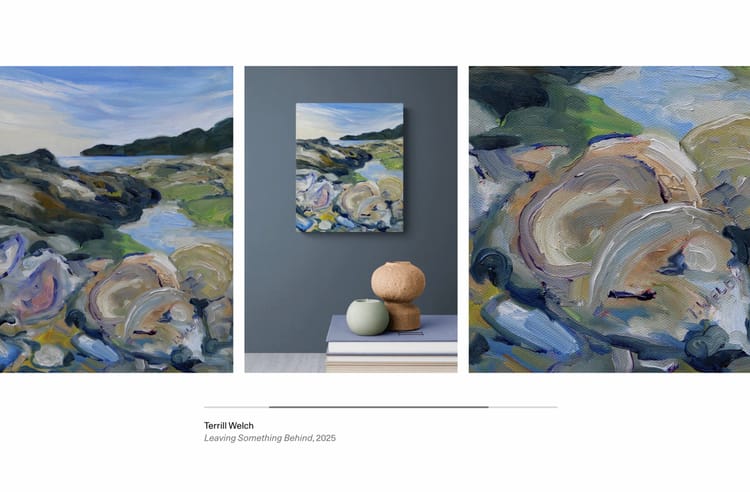
Member discussion